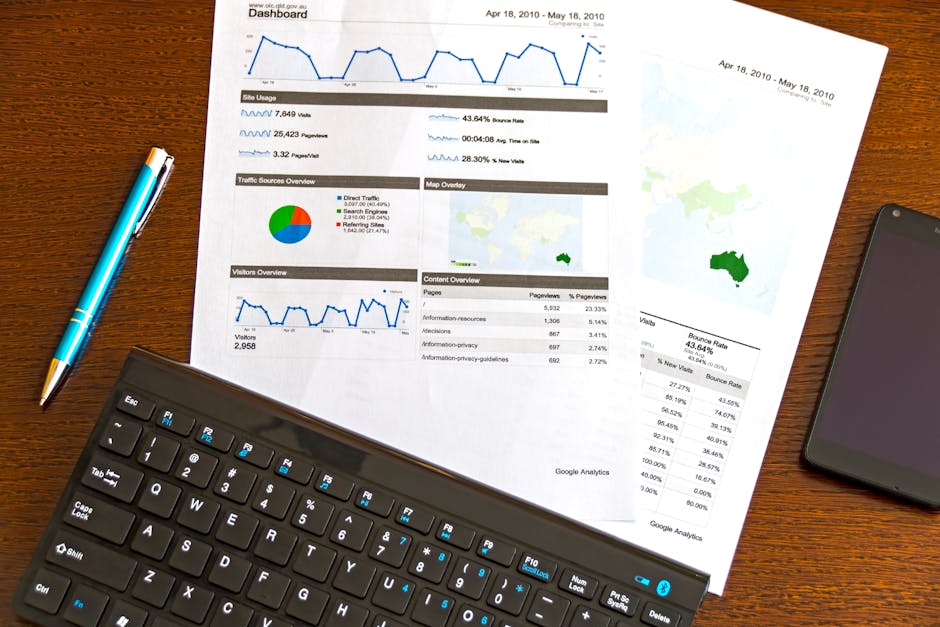Utilizing Data for Sourcing Risk Insights
Have you ever wondered how businesses predict risks before they happen? Imagine a world where companies can avoid costly mistakes just by analyzing data. This is not just a dream; it’s a reality shaped by data science. In this article, well explore how organizations can use data to gain insights on sourcing risks and make smarter decisions.
What Are Sourcing Risks?

Sourcing risks are the potential problems companies face when obtaining goods and services. These risks can affect quality, delivery times, and even costs. Common examples include:
- Supplier failures
- Price fluctuations
- Regulatory changes
- Natural disasters
Understanding these risks is crucial. A single hiccup in the supply chain can lead to delays and lost revenue. By utilizing data, companies can identify and manage these risks effectively.
How Can Data Help Identify Sourcing Risks?

Data acts like a flashlight in a dark room. It illuminates the paths companies can take and shows where pitfalls lie. Here are some ways data can be utilized:
- Trend Analysis: Companies can look at historical data to identify patterns. For instance, if a supplier often fails to deliver on time in December, that’s a red flag.
- Predictive Analytics: This involves using data to predict future events. For example, machine learning models can analyze various data points to forecast price changes.
- Real-time Monitoring: Companies can track suppliers performance in real time. If a suppliers delivery speed drops, businesses can act quickly.
Data helps companies not just react, but also anticipate risks. This proactive approach is key to staying ahead.
What Types of Data Should You Use?

Not all data is created equal. Some types of data are more valuable for sourcing risk insights. Heres what to look for:
- Supplier Performance Data: Track metrics like delivery times and quality ratings.
- Market Trends: Stay informed about industry trends and news that could affect suppliers.
- Financial Data: Analyze suppliers financial health to predict stability.
- Geopolitical Data: Look at events in regions where your suppliers are located. Political instability can pose significant risks.
By focusing on these data types, businesses can create a clearer picture of potential risks in their sourcing strategies.
How to Analyze Data for Sourcing Risk Insights?

Now that we know what data to collect, lets look at how to analyze it effectively. Here are some practical steps:
- Set Clear Objectives: Define what you want to achieve. Are you looking to reduce costs, improve quality, or ensure timely deliveries?
- Use the Right Tools: Invest in data analytics tools. Software like Tableau or Power BI can help visualize data.
- Involve Experts: Collaborate with data analysts. Their expertise can guide you in uncovering insights.
Breaking down the analysis into manageable steps can make the process less overwhelming. Start small and build as you learn.
What Are Some Common Misconceptions About Data Analytics?
Many people have misconceptions about data analytics. Here are a few and the truths behind them:
- Myth: Data analytics is only for large companies.
Truth: Small businesses can benefit just as much. Affordable tools make data access easier. - Myth: You need a data scientist for insights.
Truth: Many tools are user-friendly. Basic data analysis can be done with a little training. - Myth: More data is always better.
Truth: Quality over quantity matters. Focus on relevant data.
By clearing up these misconceptions, more organizations can embrace data analytics for sourcing risks.
Can You Use Data to Mitigate Risks?
Absolutely! Data not only helps identify risks but also aids in mitigating them. Heres how:
- Supplier Diversification: Use data to identify multiple suppliers for critical components. This reduces dependency on a single source.
- Negotiation Strategies: Analyze historical pricing data to negotiate better contracts. Knowing past prices can strengthen your position.
- Scenario Planning: Use data to create different scenarios. What happens if a supplier fails? Having plans in place can save time in crises.
Mitigating risks using data is about being prepared. it’s like having a backup plan for unexpected events.
What Are the Benefits of Using Data for Sourcing Risks?
Utilizing data for sourcing risk insights offers numerous benefits. Here are some key advantages:
- Improved Decision-Making: Better data leads to better choices.
- Cost Savings: Identifying risks early can save money in the long run.
- Enhanced Supplier Relationships: Understanding performance helps build stronger partnerships.
- Increased Competitiveness: Companies that leverage data stay ahead of the curve.
These benefits illustrate why embracing data analytics is crucial for modern businesses.
How Can You Get Started with Data Analytics?
Ready to dive into the world of data analytics? Heres how to kickstart your journey:
- Educate Yourself: Take online courses on data analytics. Websites like Coursera or Udacity offer great resources.
- Start Small: Begin with basic data analysis. Use tools like Google Sheets to practice.
- Collaborate: Team up with others in your organization. Share knowledge and learn together.
- Seek Expert Help: If you can, hire a consultant to guide you.
Starting small and gradually expanding your data capabilities can make the process more manageable.
Final Thoughts: Actionable Takeaways
In conclusion, utilizing data for sourcing risk insights is not just smart; it’s essential. Here are some actionable takeaways:
- Identify key sourcing risks in your business.
- Collect and analyze relevant data regularly.
- Stay informed about market trends and supplier performance.
- Develop contingency plans based on data insights.
By embracing data analytics, you empower your business to make informed decisions, reduce risks, and ultimately thrive. Start today, and watch your sourcing strategies improve!
For more insights on data-driven decision-making, check out this article from Forbes.

